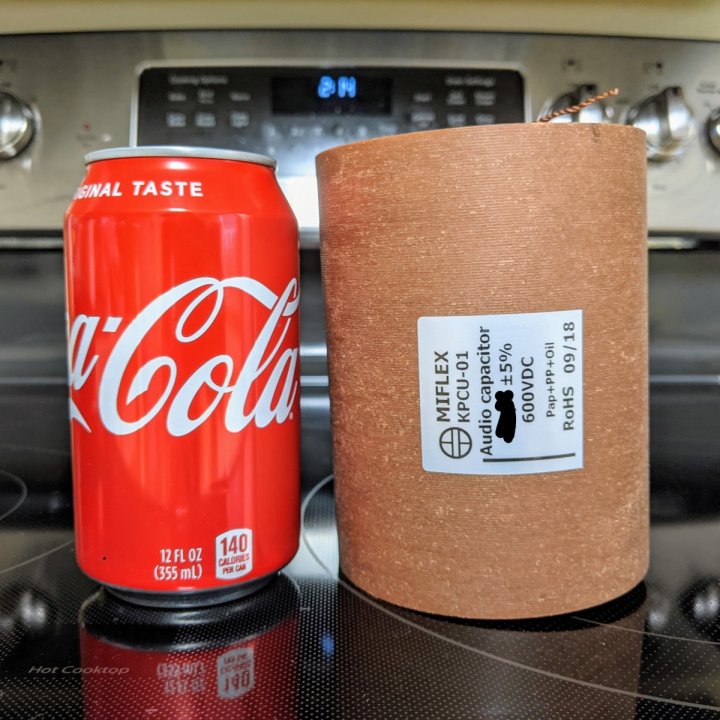That's kind of the wrong question to ask, as the reality, simply put, "it's complicated." You will get improvements in some ways and others may only make for a shift in tone, or sound stage presentation.
Plus, what is "best" will be dependent on what you want out of the components, and what your speaker is capable of reproducing, but in the end you may not like how "the best parts" sound, or the compromises you need to make in order to use them.
Synergy is as much a thing with components as it is with amplifiers and any other gear.
You need to know where you're starting from, and what it is that you want out of the upgrade process, and how far you're willing to go and how much you're willing to spend.
and lastly what sort of sound are you after? Smooth? Clean? Warm? Detailed? etc...
Generally speaking, the biggest improvements come from getting away from dirt cheap iron-core inductors and electrolytic caps, especially in the mid and treble. (300Hz-20KHz)
If you have a typical retail speaker the real trick is going to be fitting the new parts onto the old board, as in most cases, even budget quality crossover parts can be several times larger than their stock counterparts, capacitors and inductors especially, and you'll have to rebuild the crossover onto a new board.
Plus you have to take the drivers and cabinet into account, is it a big speaker? does it have a large baffle? is it well braced?
what kind of drivers does it use? are they fast? slow? etc..
All of that will affect what parts make the most sense for your build and what is possible.
a big box speaker with wide baffles, no bracing, and big metal drivers will be limited in it's performance at a lot of levels, even with the "best" parts
Meanwhile, a speaker with a narrow baffle & a well braced cabinet with fast, articulate drivers, will already have good performance even with budget components.
For instance, take a look at this massive copper foil capacitor I used in my NX-Studios crossover. I cannot fit it into the speaker with the rest of the crossover, it's just too large.

That's not a realistic option for most people, especially at $300-400 each. So it better than cheap parts? Absolutely. However, depending on your tastes you may not find them "best" for you.
Most good or even great quality capacitors wont remotely be this large, they rarely exceed the size of a C-cell or D-cell sized battery until you get into larger values.
Want to replace a 12mH large iron core with an air core? Be prepared to shell out stacks of cash for a couple 12 gauge coil that also won't fit inside 99% of speakers on the market and probably weighs several lbs.
the difference will be minimal, especially compared to a good quality 16-gauge iron core inductor. especially if it's only playing below 300hz.
Most every speaker on the market will benefit from even upgrading to good budget caps, and air core inductors. Rewiring the whole speaker with good quality wire soldered directly to the drivers and getting rid of steel binding post nuts/tabs will allow for significant improvements in performance.
Want to go further? Sonicaps are a fantastic capacitor that wont break the bank, and they can be bypassed with a small 0.1uF copper foil capacitors to add a bit of body and richness to the sound without spending 4-6x more.
Beyond that would be V-Cap ODAM, but they are also 2-3x the cost of a Sonicap of the same value, but this is where the quality of your drivers and speaker as a whole really start to matter., and you can affect it's tone with copper or silver bypasses
Miflex or Jupiter copper capacitors, go in a different direction altogether, they are very warm with a lot of body and lushness over Sonicaps or V-Caps, but that sound isn't for everyone.
Also don't forget that the further up the chain you go, the more "burn in" is required.
Most cheap & budget caps settle into their sound by 100hours of play time and any changes are fairly subtle.
Mid-range caps like Sonicaps/ClarityCaps need at least 200 hours before they settle, with mild, but gradual shifts over time
High-end caps like Miflex, V-Cap, Jupiter, Duelund caps will all need at least 400+ hours on them, and their tone can shift dramatically over that period. (That's basically a full 3 weeks of 24/7 playing)
Will your speaker benefit from the "best parts"? Sure, but could you get 95% of the way there for 1/5 the cost? Absolutely.
Beyond the theoretical "what if?"
The next thing would be to let us know what your speaker is, and what you're looking to achieve. (what sort of sound signature/performance are you looking to achieve)